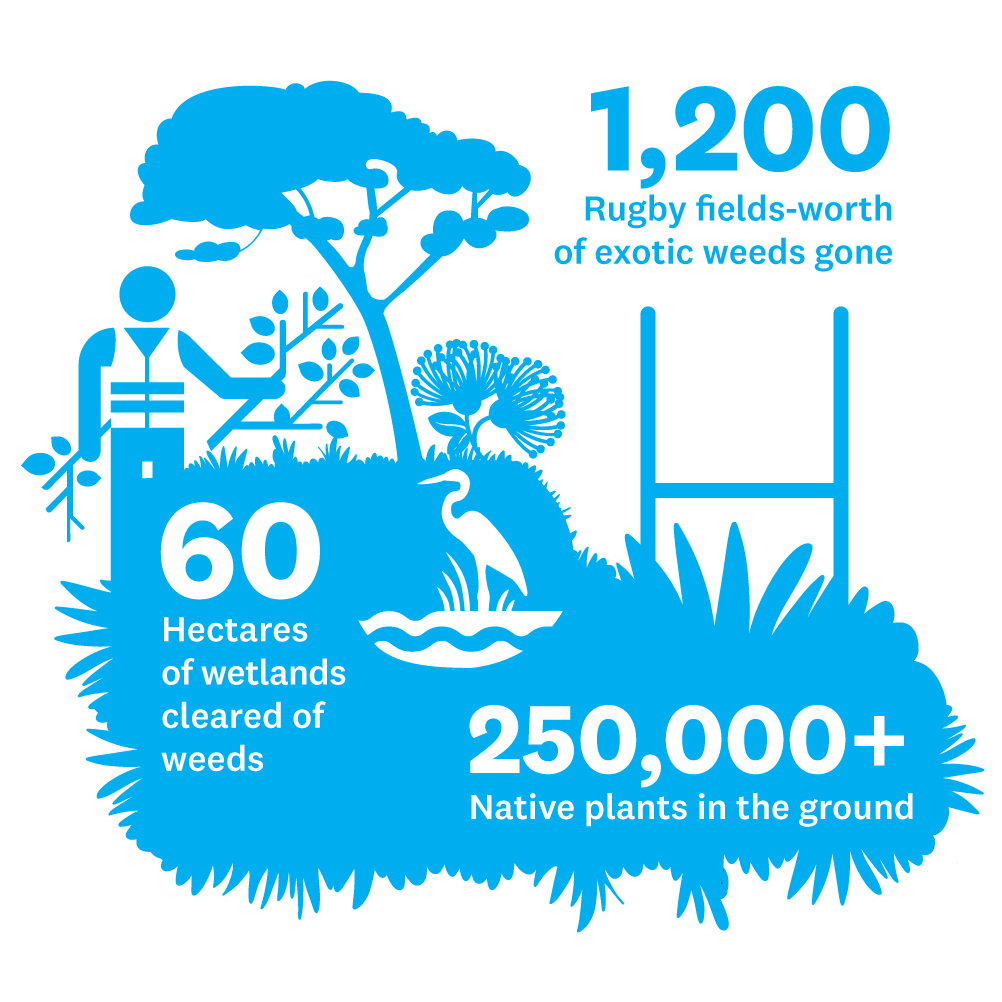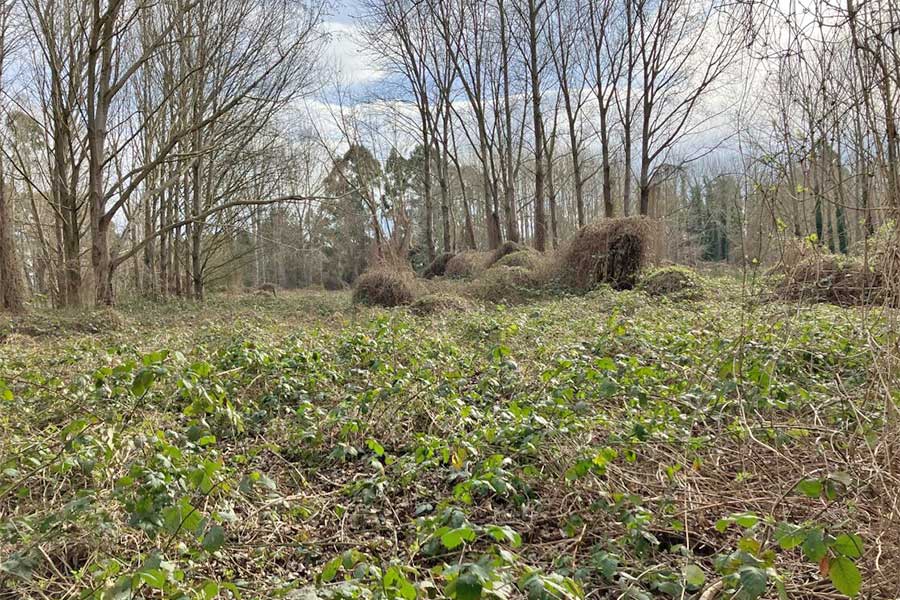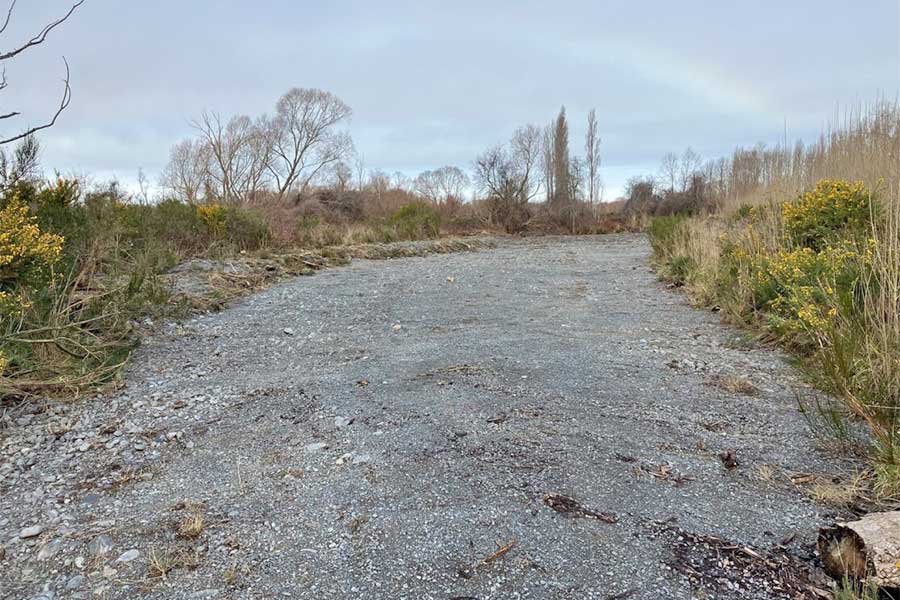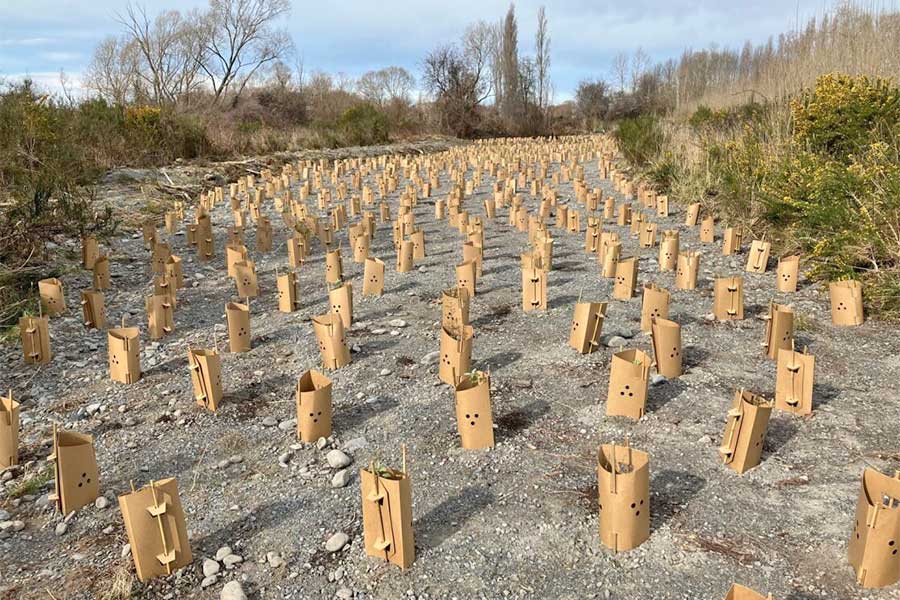Stopbanks, vital for flood defense, safeguard lives and infrastructure. Collective responsibility ensures their effectiveness in averting major floods.
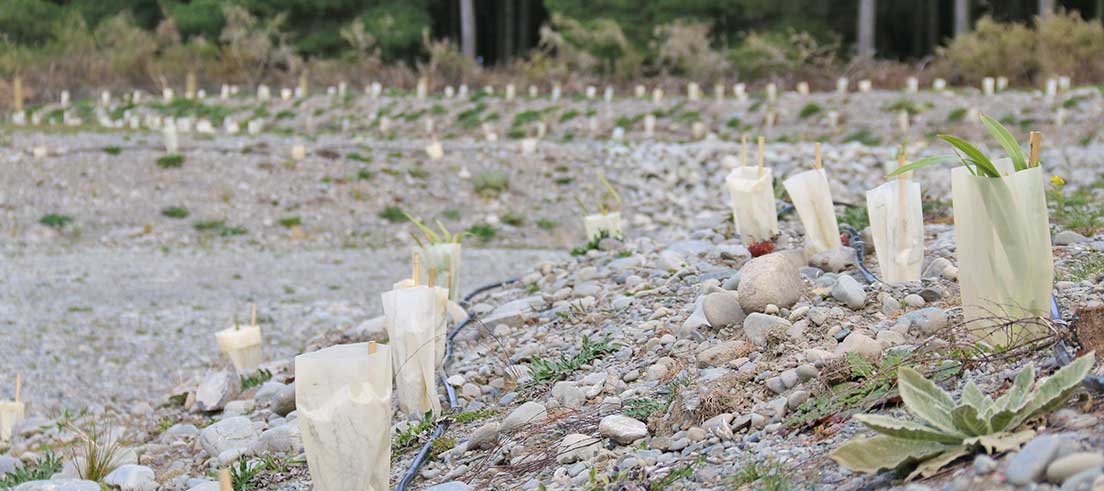
Braided river works reduce flood risk and enhance biodiversity
Picture this – 1,200 international rugby fields full of exotic weeds. We’ve been able to clear weeds from this much land along more than 20 rivers in Waitaha/Canterbury, thanks to central government’s one-off shovel-ready climate resilience funding.
With our changing climate, the frequency and number of floods will increase, impacting native habitats, farmland and communities. Over the past three years, this funding has enabled us to strengthen river berms, flood protection and climate resilience, and enhance the rivers’ natural character and biodiversity. We’ve made a significant impact, but it is just a small glimpse at what is possible if we secure permanent central government investment in climate resilience.
Significant milestones in our regionwide berm transition project
The shovel-ready funding gave us a unique opportunity to roll out our regionwide berm transition project, a targeted and strategic programme of weeding and underplanting along our rivers, helping to make them stronger, safer and more resilient.
Milestones as of August 2023:
- More than 60 berm transition sites have now been established across the region
- Six large-scale fairway clearance projects have commenced to remove encroaching vegetation from sections of the active braid
- Targeted weed control has been undertaken on more than 1,200 hectares
- Pest trees have been targeted in more than 60 hectares of riverine wetlands
- The 250,000 native plants we have put in the ground, plus those generated by natural seed dispersal have resulted in an estimated 500,000 new plants across the region.
"Above and beyond the quarter of a million plants we’ve put in the ground, we’ve seen a huge number of wild native seedlings naturally spreading where weed pressure has been removed," Regional Lead – Braided River Revival Greg Stanley said.
"With ongoing management, these wild plants will continue to recruit into the wider area. That is hugely exciting."
Partnering with communities
We couldn’t have done this without our communities and willing partners, including local contractors and the members of the public who got in behind our community planting days.
Milestones as of the end of August 2023:
- Over 45 contractors have been involved in the project to date
- 80% of them were local businesses, 19% were Māori-owned businesses
- 130,606 total hours worked by both contractors and internal staff
- The monthly hours worked averages the equivalent of approximately 816 fulltime employees (FTEs).
"We've certainly made a positive change with our project and, as the one-off funding comes to an end, our focus will move to how we hold onto that change and where we apply our effort next," Greg said.
"We've proven that these ideas can have a positive impact on these infested lower reaches. We've cleared huge reaches of the river to allow it more space to spread and braid. We're looking forward to seeing where we might get to apply these strategies next."
Enhancing river resilience
The regionwide berm transition project has provided an opportunity to investigate new ways of doing work in rivers, putting the focus on ‘soft’ infrastructure, such as weed clearance and native species understory planting. These methods provide significant flood protection, climate change resilience and biodiversity benefits.
Berms are the managed area between the active braid of the river and the stopbanks. Together with stopbanks and trees, these river berms play a critical role in flood protection, helping to slow flood water and absorb force.
However, berms are often negatively affected by weeds which:
- Smother flood protection trees, increasing the risk of erosion
- Damage stopbanks and other essential infrastructure
- Out-compete native species
- Decrease native habitat diversity
- Encroach into the waterway and detract from its natural character
- Minimise recreational values.
Enhancing berm resistance through native plant replacement
As we replace pest species with native plantings, we further increase the berms’ resistance to invasion.
Some of our earlier berm transition sites projects are proving successful on the Waimakariri and Rakahuri Ashley rivers and the work continues on more than 20 rivers across Waitaha.
Holding onto what native plant life remains and building on that is the key to a stronger, more resilient landscape.
"Our native vegetation is more diverse, more disease resistant, and more competitive. It fits perfectly into the local ecosystem and supports the balance of flora and fauna. Native vegetation captures more light and can happily grow beneath many of our exotic tree species; we don’t have to have one or the other," Greg said.
"We could be in the last 10 years of trying to hold onto native vegetation on Waitaha river berms. As a result of climate change, things are only going to get harder, so now is the time to invest in what we have left."
At a time when we need our river corridors to function better than ever before, we have the blueprint for success. Now we just need the ongoing funding that will enable us to continue to make a difference, he explained.
"We’ve made a dramatic change to our sites on the berm transition map however it’s a drop in the bucket compared to what could be achieved with permanent co-investment in holistic river management. It’s a great start, but also a very small start – the difference now is that we’ve got a recipe."
Permanent central government co-investment
Significant flood protection, biodiversity, and community projects like this have been made possible due to the Government’s one-off COVID-19 response shovel-ready funding. However, climate change-induced events across the country have highlighted the urgent need to remediate outdated flood protection infrastructure.
Currently, regional and unitary councils invest about $200 million each year in flood protection schemes. With ageing structures no longer able to meet the levels of service expected by communities against the challenge of climate change, this is expected to fall short of what’s needed by $150 million per annum.
What is increasingly clear is that a shared investment today means lower overall recovery costs, and better protection for the environment, and for current and future generations.
Read more about our other key achievements across our biodiversity programme in our latest Biodiversity Snapshot Report.
Featured news
Collaborating with Te Rūnanga o Kaikōura to enhance Hurunui River berm, improving flood protection, climate resilience, and restoring native habitat.
CityCare Property, share their mahi challenges, motivations and hopes for the future of the Waimakariri River weed control and planting project.

